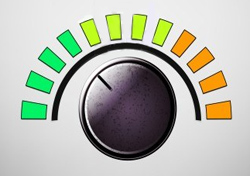Although this is not a rigorous treatment of the subject, the following are general guidelines that may be helpful in setting the gain structure for an audio system and making final adjustments to it for best results.
A Basic Procedure
As a minimum, you need to use at least a voltmeter along with the maximum output voltage specification for each piece of electronics. The preferable tool is an oscilloscope that can be used to observe the signal directly. If neither of these are available, you can use the level or clipping indicators on each piece of equipment in the signal chain.
Without some method of determining the clipping point for each piece of equipment, you cannot expect to optimize the gain structure.
Before setting gain structure disconnect the loudspeaker(s) from the amplifiers. If controllers are used that sense the amplifier outputs do not disconnect the sense lines.
The basic procedure is to use a test signal (a sine wave signal is ideal) and set the first piece of equipment in the signal chain (usually the mixer) so it is just below maximum voltage output as read on the voltmeter or on equipment’s output meter or just below clipping as observed on the oscilloscope.
Without changing this signal level adjust the level controls on each piece of equipment following, including the power amplifiers, so it is just below its maximum output.
You will find that the input level controls on the power amplifier will end up being set anywhere from 10 dB to over 20 dB of attenuation.
Note:
Due to differences in the capabilities of devices in the signal chain, it may not be possible to achieve the results exactly as stated. Gain structure should be set after any equalization is set for the system so that any boosts (which reduce headroom in the equalizer) are taken into account. For each device, make sure it is the output and not the input that is clipping.
Always make sure that the any limiters in the system go into limiting prior to anything else in the system going into clipping. In this way the limiter, rather than a clipped signal somewhere else in the signal chain, will control the system’s maximum output.
Remove the test signal, turn off all equipment and reconnect the loudspeaker(s) and the system is ready for level balancing, assuming you have more than one loudspeaker. If you have only one loudspeaker, the system should be ready for use.















